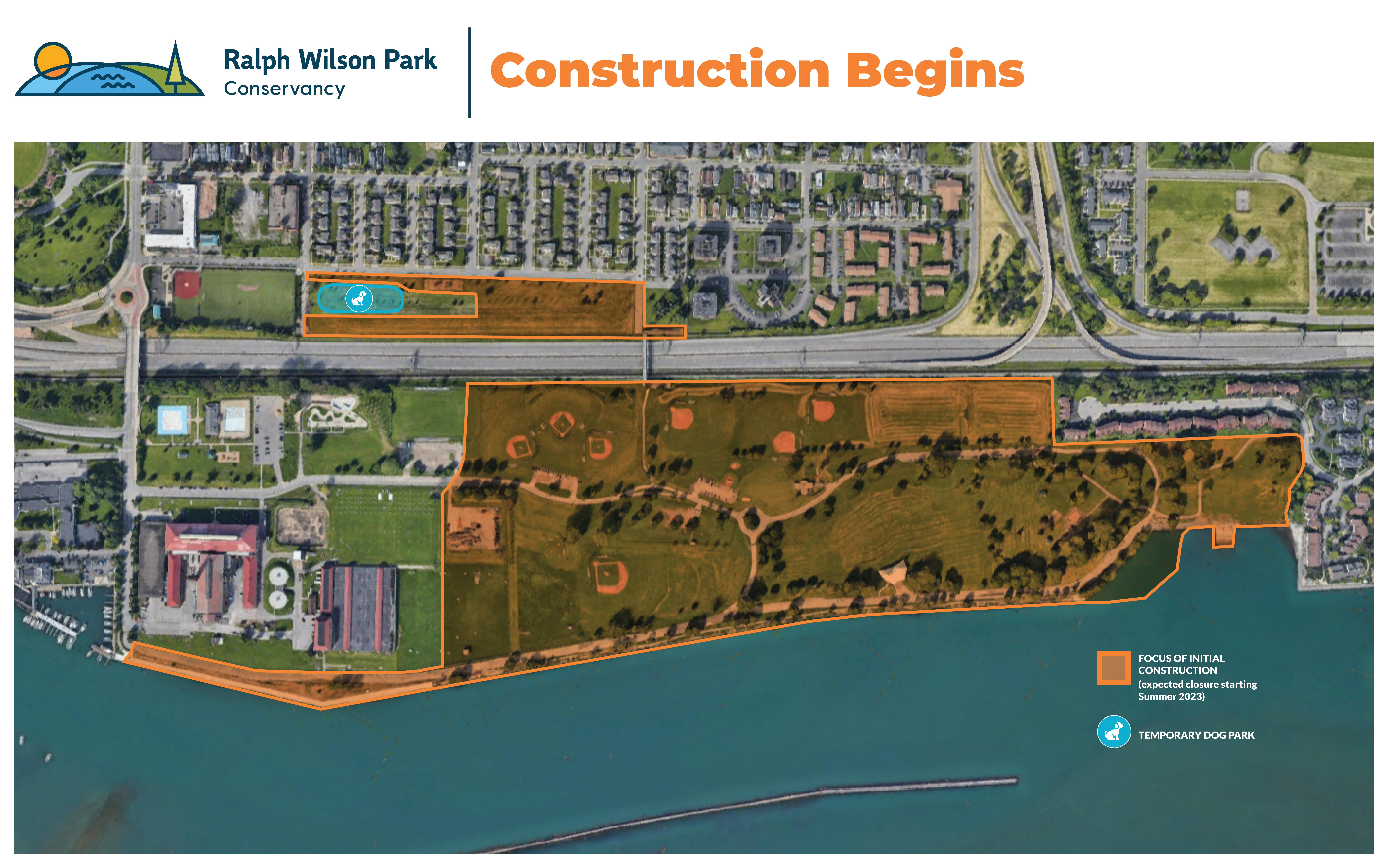As part of ensuring our community and especially our park neighbors are kept informed, we will send out a weekly construction update every Monday morning. We will also post these updates to our website, Instagram, Facebook and LinkedIn.
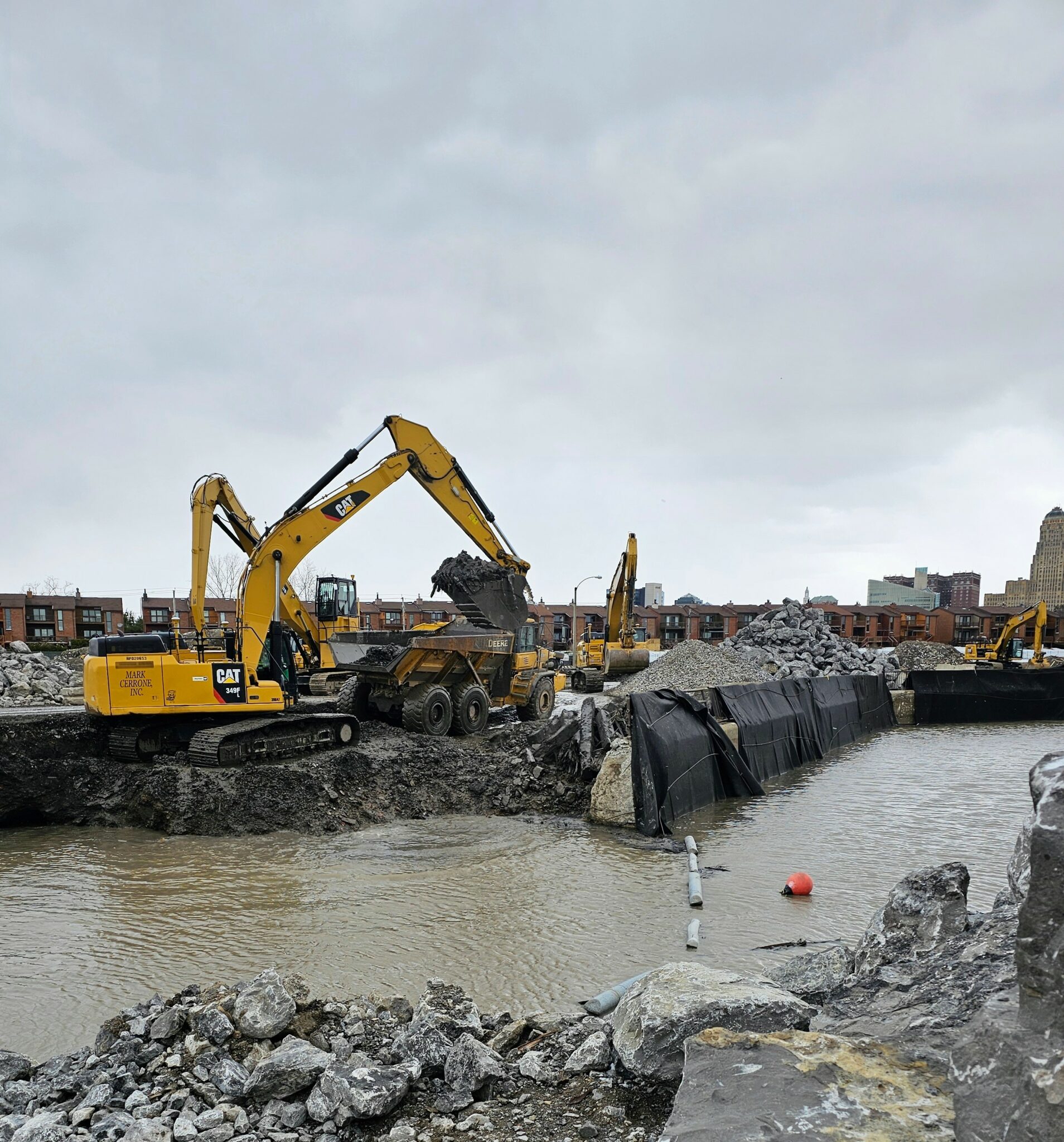
The inlet is taking shape! Crews are excavating the land behind the hard cement sea wall (the bulkhead) to install the big box culvert. The box culvert is an underwater tunnel that allows fresh water to flow to and from the inlet from Lake Erie. Importantly, it is also a tunnel for fish to travel from the inlet back to the lake.
The box culvert is made up of 20 sections, and each section is about 7ft 4in long and 7ft wide, totaling 165 ft in length. The box culvert is placed underground and will run from the north side of the inlet, underground, to the Black Rock Channel. To put the box culvert in place, crews will dig down to bedrock and add stone to create a level stable surface for the culver to sit upon. Armored stones will be placed around the assembled box culver to protect it, and then stone and soil will be placed on top.
The operator in the excavator uses GPS technology to guide each dig, ensuring that he is excavating to the proper depth – the same GPS technology we use to get us from point A to point B!
The Bridge Foundation
The foundation of the signature pedestrian bridge is made up of a number of small, though incredibly important, sections that make up the whole. The purpose of the foundation is to hold up the bridge and keep it steady. The foundation acts by transferring the significant weight of the bridge– 200+ tons of steel! – through the existing soils – down 30 ft to stable bedrock.
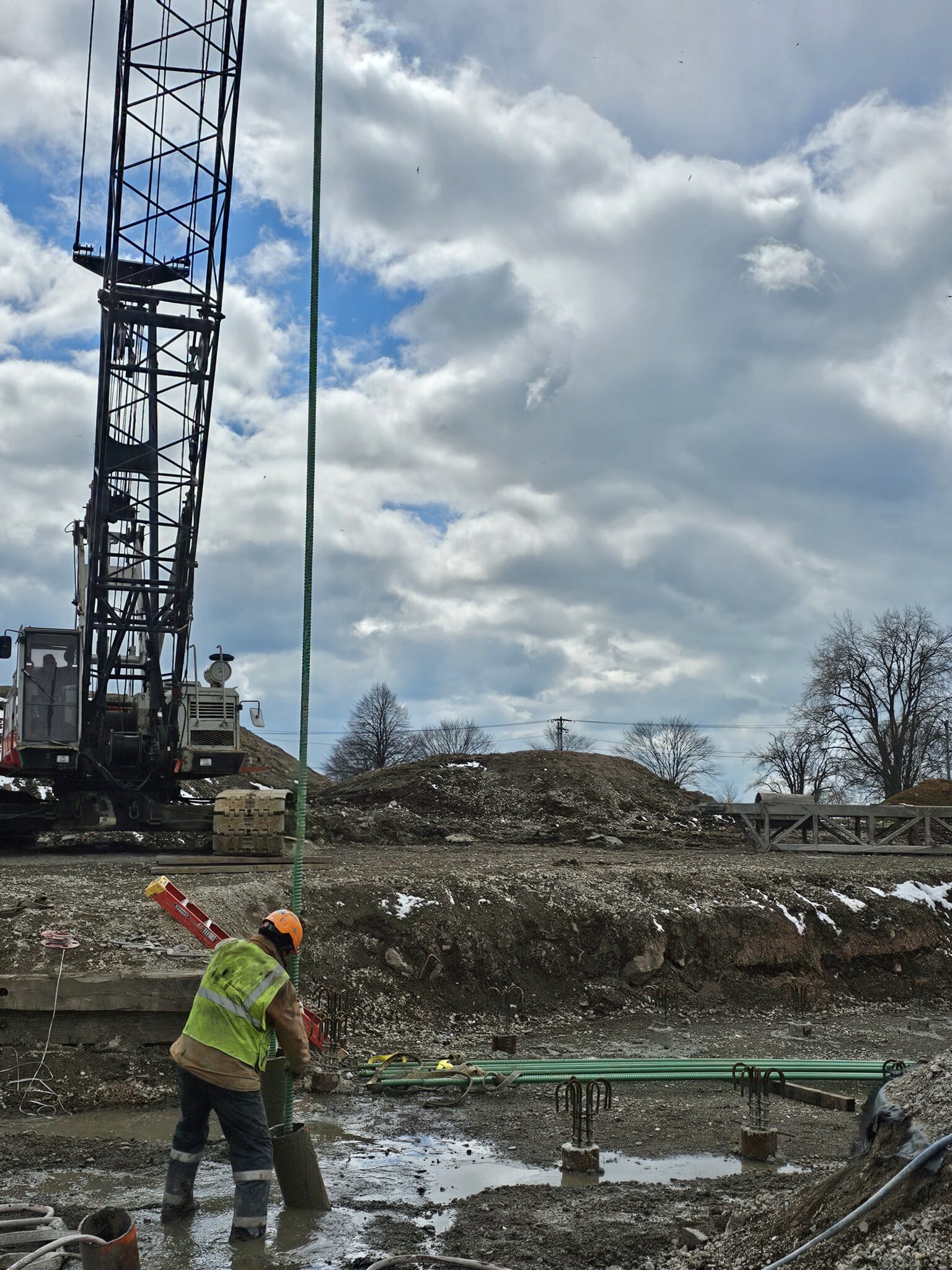
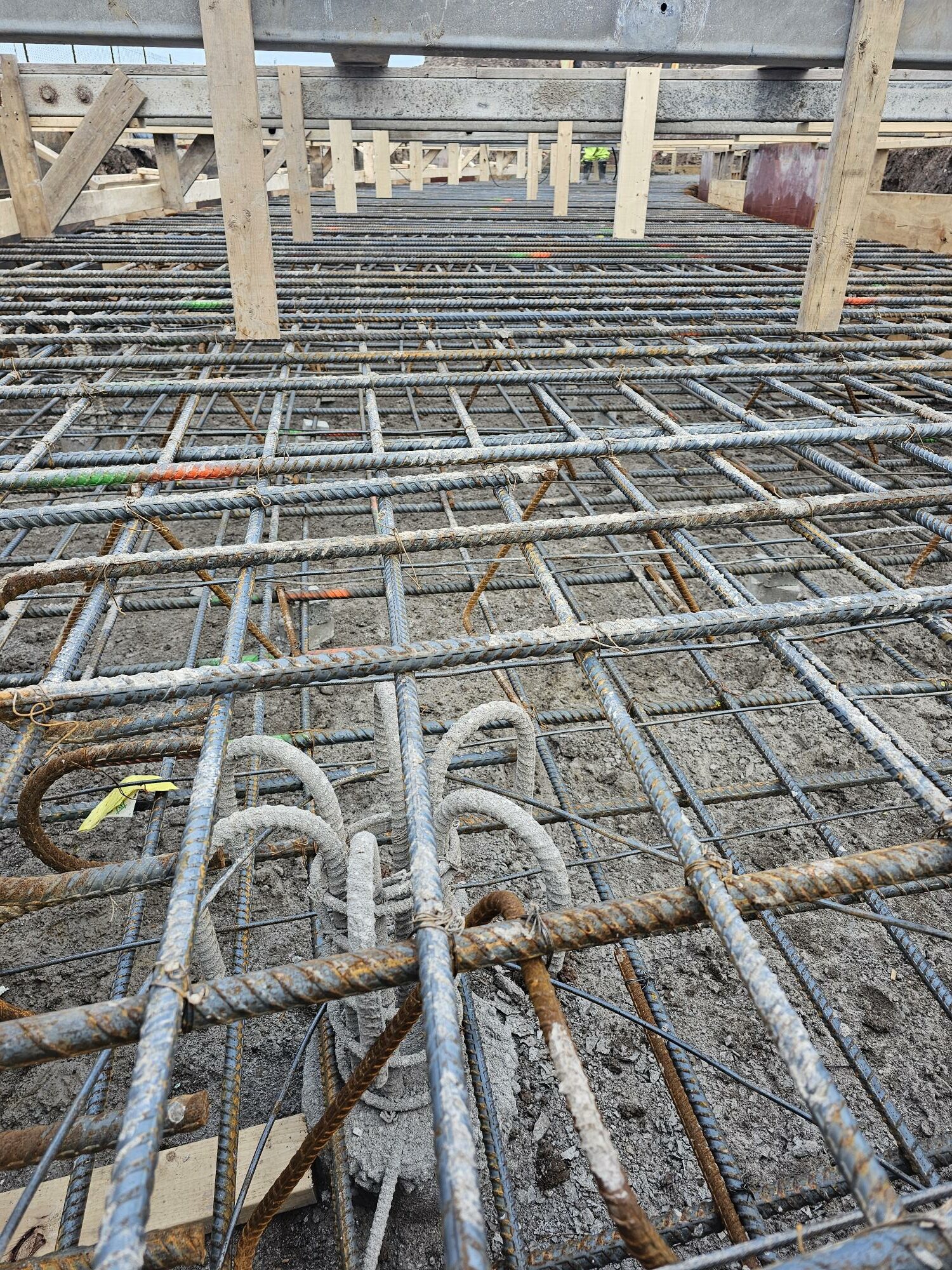
Worker inserting 40’ piece of rebar into battered pile
NW pile cap ready for concrete
The animated graphic above shows the pieces that makeup the foundation of the 230 ton pedestrian bridge:
a. Thirty-foot-long hollow steel pipes, called piles, are driven through the existing soil to bedrock and filled with grout.
b. Additional hollow steel pipes, called battered piles, are driven at an angle to bedrock and a drill is inserted to extend 6-8’ into the bedrock. A single 40’ section of 2.25” diameter rebar is placed in the steel pipe and filled with grout, locking the pile into the bedrock- this is a process called rock socketing.
c. A 2’6” thick reinforced concrete pad is poured over the pile forming the pile cap. This pile cap is the footprint that the bridge abutment and eventually the pedestrian bridge will sit on. The video below shows crews placing 135 cubic yards of concrete to form the NW abutments pile cap.
Bridge Manufacturing
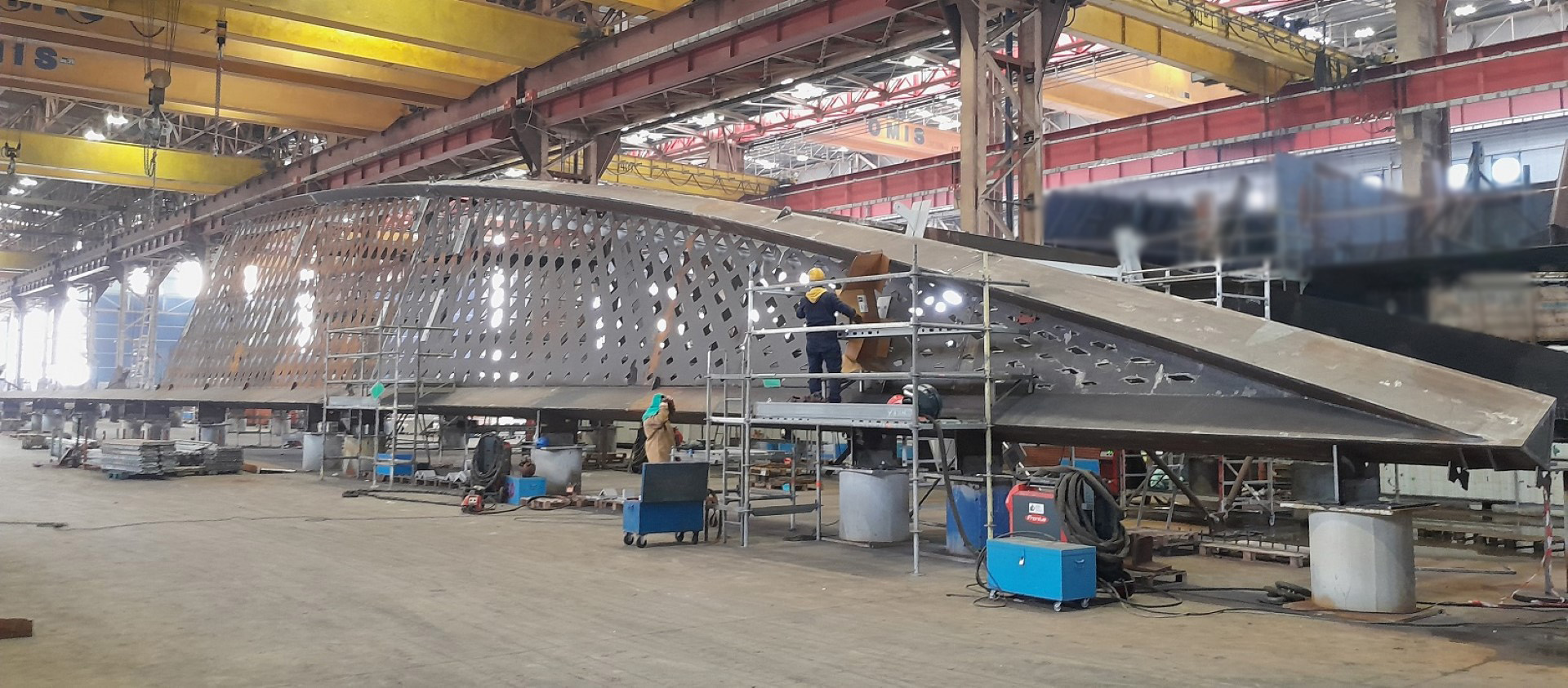
Pictured above is the 260’ steel pedestrian bridge that will make its way to Ralph Wilson Park from Italy! Stay tuned for more updates on the travels of this important piece of park infrastructure.









